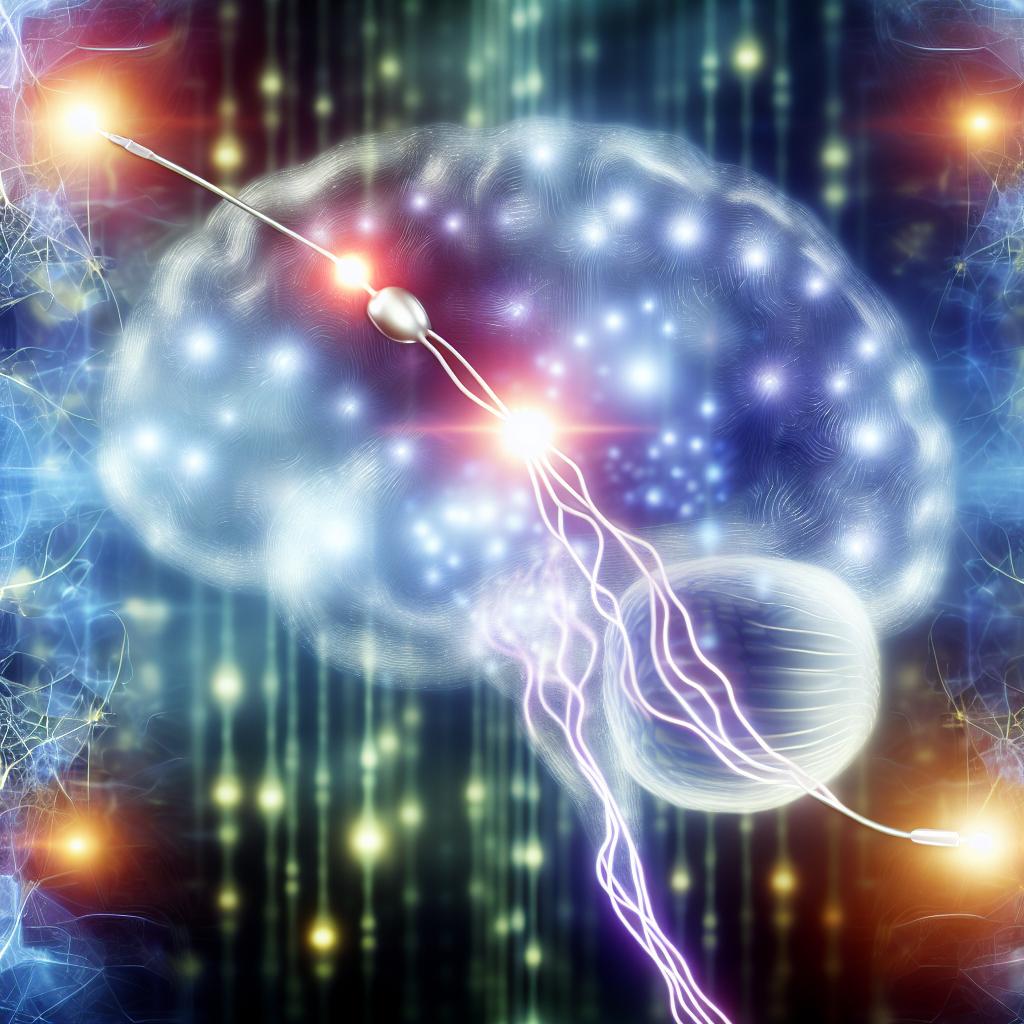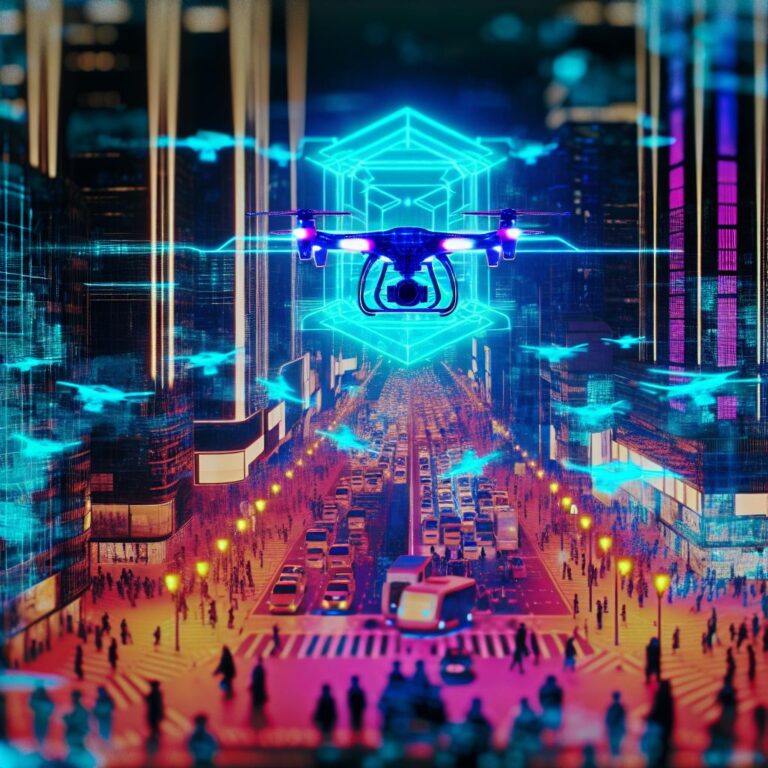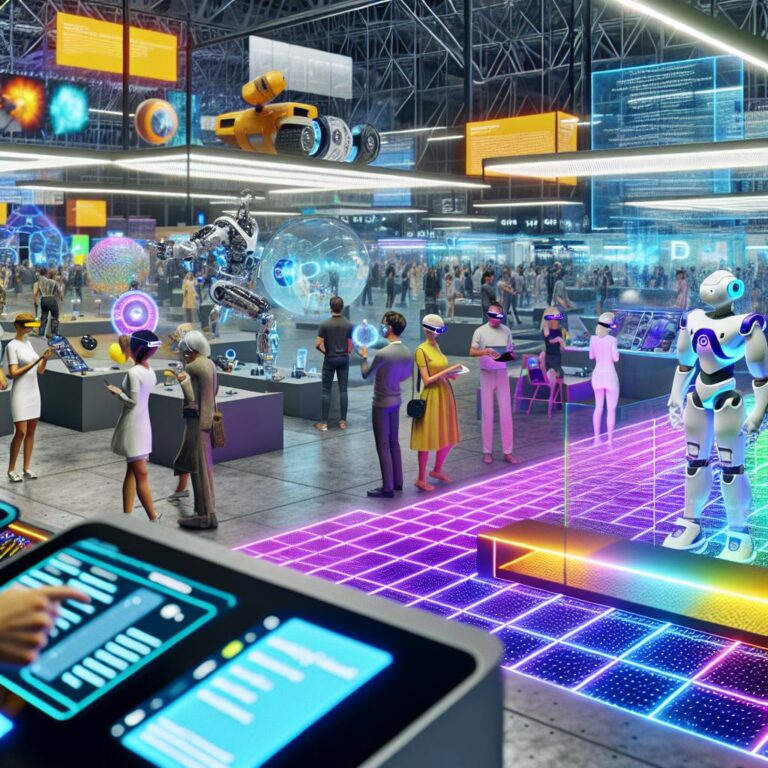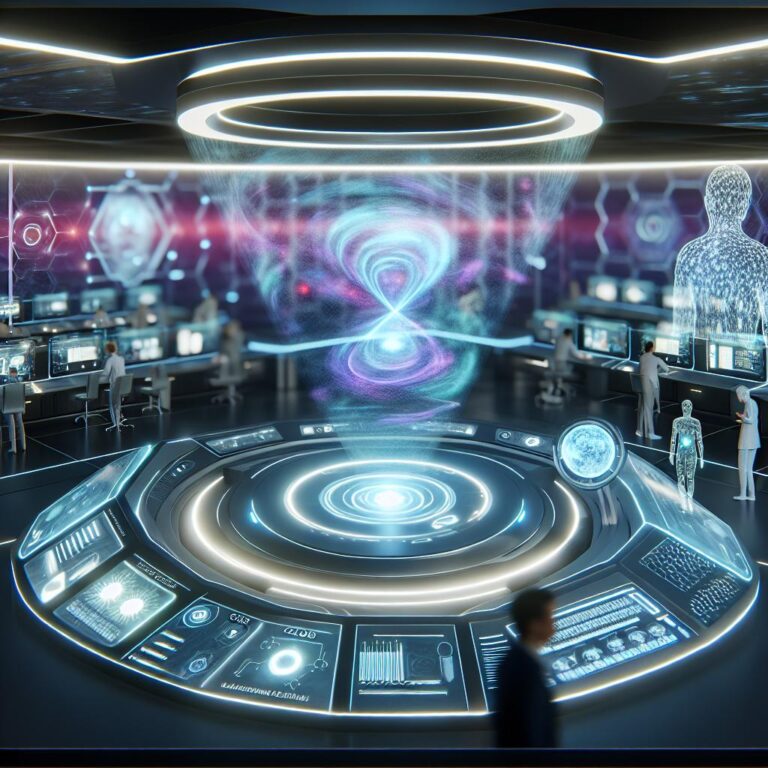Neuralink: How Does the Brain-Computer Link Work?

- Neuralink's BCI technology involves "the Link," a small implant with 64 threads and 1,024 electrodes to read brain signals.
- It allows users, like Noland Arbaugh, to control devices through "attempted" and "imagined" movements.
- Offers more electrodes and comfort compared to competitors, like the Utah Array.
- The implant requires daily charging, akin to phone maintenance.
- Issues like thread retraction occurred but were addressed through recalibration.
- FDA approved further trials for improvement and safety validation.
- Ethical concerns include privacy, enhancement, and safety risks.
- Neuralink could revolutionize neurotechnology and healthcare, with potential public investment opportunities in the future.
Picture a world where your brain and computer work as one. Neuralink, a brain-computer interface, makes this possible. It reads your thoughts and translates them into actions, connecting mind and machine. As a fan of tech updates, you'll love exploring how this groundbreaking tool reshapes our lives. Dive in to learn about Neuralink's strategies, the implant process, and its real-world impact. Discover what makes this tech both thrilling and controversial. Join me as we explore the future of human interaction with machines.
What is the Technology Behind Neuralink's Brain-Computer Interface?

Neuralink has made great strides in brain-computer interface (BCI) technology. At the heart of this innovation lies "the Link," a small, coin-sized chip that is implanted into the brain. As daunting as this may sound, the technology behind this device is truly fascinating.
The BCI works with 64 superfine threads, holding a total of 1,024 electrodes. These threads are thinner than a human hair, making them both impressive and unique. They are designed to read brain activity and convert these signals into digital commands. These commands allow people like Noland Arbaugh to control devices just by thinking about them.
One remarkable aspect of the Neuralink device is its ability to translate brain signals into actions. This process is divided into two main methods. First, "attempted movement" involves the brain signaling a limb to move, although it cannot due to paralysis. Second is "imagined movement," where a user focuses on an on-screen cursor to move it, almost like playing a computer game with your mind.
You might wonder how this compares to other BCI systems. The Utah Array, a standard system, uses fewer electrodes—only about one-tenth of Neuralink’s. While it also reads brain signals, the Utah Array is larger and less comfortable. Neuralink’s design is more compact, and the electrodes are more refined. This difference lets the Link offer better precision and user experience.
The chip itself is lodged under the scalp, almost blending seamlessly with the body. Users do not even feel its presence, a fact demonstrated by Arbaugh, who continues to use it without physical discomfort. Yet, like any innovation, it has its challenges. After some time, Arbaugh's device faced an issue where the threads started retracting, losing some functions. Neuralink responded quickly, adjusting algorithms to optimize the remaining threads. This reaffirms their commitment to improving the tech for better usability.
Daily use of the Neuralink device involves wearing a hat with a wireless charger to recharge the implant. This regular maintenance can be slightly inconvenient, but it ensures the device stays powered for use throughout the day.
Another impressive aspect of Neuralink is its adaptability. Even when issues arise, like the thread retraction faced by Arbaugh, the system can adapt to restore much of its lost functionality. By recalibrating the algorithm to work with remaining electrodes, Neuralink demonstrated its capability for resilience and improvement, setting a new standard for brain-device interaction.
With the U.S. Food and Drug Administration allowing further clinical trials, the focus on addressing technical challenges continues. By potentially embedding threads deeper into the brain, the company aims to reduce issues like retraction and enhance long-term stability. Arbaugh's case shows how obstacles in tech can become opportunities for growth and future advancements.
Neuralink’s work signals a major leap in interface innovation. Its effects are personal, giving users a chance to connect with tech directly from their mind. This level of BCI enhancement fills a gap that other systems, like the Utah Array, have not yet bridged. Through ongoing collaboration with regulators and improving response to real-world conditions, Neuralink has set a foundation for change in BCIs.
As this technology evolves, it holds promise for many who may benefit from such direct interaction with devices. With further refinement, Neuralink could redefine how humans engage with both environment and technology.
How Does the Neuralink Implant Work and What is the Procedure Like?
The Neuralink implant procedure is a medical wonder. The process starts with a tiny computer chip. This chip, called "the Link," fits snugly in your skull. It connects with your brain through fine threads.
These threads are thinner than a human hair. They have electrodes that pick up signals from your brain. Once the implant is inside, it can read and translate these signals into actions. For instance, it can control a computer cursor.
But how does this happen? During surgery, doctors use a robot to insert the electrodes with high precision. This is important because accuracy reduces brain damage risk. The robot's role here is like that of a skilled, steady-handed chef preparing an intricate dish.
Now, what can you do once the chip is in place? Users can interact with digital devices effortlessly. A person can play video games, type on a computer, or even open apps. This system has been through a lot of thought and planning.
Let’s meet someone who has used Neuralink: Noland Arbaugh. His life changed after getting the implant. Arbaugh lost mobility below his neck in a swimming accident. But now, he says the device has helped him "reconnect with the world."
His implant reads his brain's signals, helping him use technology in new ways. How does he control devices? Simple—using something called "attempted movement." When he tries to move his paralyzed limbs, the device notices his brain's activity. It turns those signals into actions on a screen.
Arbaugh also uses "imagined movement." He looks at a computer cursor on the screen, and his brain moves it. This kind of control is miles ahead of voice commands or a mouth stick.
The implant needs care, though. Daily charging is a must! Arbaugh uses a hat with a wireless charger to keep it powered. This routine is vital but can interrupt his sessions.
One month after surgery, Arbaugh faced a problem. Some electrodes retracted, bringing less functionality. But the company fixed it. They updated the algorithm to work with fewer electrodes. Arbaugh got much of his old abilities back.
For Neuralink, this challenge is just part of the journey. The Food and Drug Administration gave the green light for more clinical trials. They aim to solve issues like thread retraction by planting them deeper.
How does the surgery affect a user like Arbaugh? Surprisingly, there's no physical feeling from the implant. The surgery took place in January and involved cutting-edge technology. These developments help the chip stay put and function better.
Daily life changes, too. Imagine being able to write an email using only your thoughts! That's the power of Neuralink. These changes mean greater independence and ease.
Maintaining the implant involves cleaning the area and checking for any issues. It's like caring for a regular phone. You charge it, keep it clean, and ensure it works well.
The technology is constantly evolving. Innovations aim for safer and more effective implants. For instance, deeper thread placement could avoid retraction problems. Each advancement makes the system more reliable and user-friendly.
The neural interface revolutionizes how we view disability. It offers new ways to interact with the world. As we grow this technology, we do so with the future in sight.
It's an exciting pathway, powered by visionaries and fueled by need. While challenges are present, optimism prevails. This isn't just about tech; it's about real lives changing for the better every day.
What Are the Key Developments in Neuralink's Clinical Trials?

Neuralink has made some big strides in clinical trials. One user, Noland Arbaugh, who is paralyzed from a swimming accident, got an implant in January. This implant, called "the Link," helps him in new ways. It records his brain activity and then turns these signals into actions.
What is the Link made of? The implant has 64 tiny threads with 1,024 electrodes. These electrodes capture brain signals much better than other devices like the Utah Array, which has fewer electrodes. The Link lets Arbaugh interact with computers. He does this by either "attempted movement"—where he tries to move a paralyzed part—or "imagined movement"—where he looks at the screen's cursor to guide it.
But not everything has gone smoothly. Shortly after his surgery, most of the implant’s threads retracted, lowering its function. This meant that 85% of the threads stopped working. Neuralink fixed this by tweaking the system so it could still use the remaining working electrodes.
Despite these setbacks, the U.S. Food and Drug Administration (FDA) has allowed Neuralink to keep testing the Link. The approval is a big deal. Why? Because it lets Neuralink make needed changes like planting the threads deeper in the brain. FDA approval is like a green light showing that the device is safe enough to keep trying out on people.
Why are FDA trials important? These trials show how well a device can work in real life. When the FDA approves trials, it says the tech seems safe based on earlier lab tests. Arbaugh's experience will help improve these trials and the device. His journey with Neuralink teaches us about the ups and downs of new tech.
Even with the problems, Arbaugh stays upbeat. He likes that he helps make this tech better for others who might use it someday. His story is like a guide for what could come: a world where tech helps people in new ways, even though, right now, his device needs frequent recharging, interrupting its use.
Looking at other cases may give us more insight into Neuralink's clinical trials. Every user has a unique role in helping the team learn more about the brain and tech. It's not only about fixing problems but also understanding how people manage with them. Testing also faces challenges with thread retraction, trying to develop ways to avoid similar issues in future surgeries.
How will this technology get better? By facing these hurdles, Neuralink hopes next trials will see better results. Learning from these events can also refine the implants’ design, making them more stable and useful. Each step ahead in trials adds knowledge and proof that tech like the Link can make life better for many.
Neuralink's trials show what's possible now and hint at improvements we might see soon. They offer hope and paths for future breakthroughs. Even with setbacks, each lesson learned aids progress. These trials are not just experiments; they represent hope and change for others facing similar challenges. Arbaugh's story and effort encourage others while guiding the journey of groundbreaking tech.
How Has Neuralink Impacted Users and Their Daily Lives?

The story of Noland Arbaugh gives us a glimpse into how Neuralink changes lives. Paralysis struck him in 2016 due to a swimming accident, leaving him unable to move below the neck. In January, he became the first person to receive "the Link," Neuralink's brain-computer interface (BCI). After the surgery, Arbaugh reported that he felt no sensation from the device. But, the impact on his life has been profound.
Imagine living with paralysis and then finding a way to reconnect with the digital world around you. That's what the Neuralink implant does. It allows people like Arbaugh to interact with their devices in ways beyond the usual voice commands or mouth sticks. This not only boosts independence but also opens new avenues for communication and interaction.
Neuralink's BCI records brain activity, transforming it into actions. It uses 64 superfine threads with 1,024 electrodes, a massive leap from its competitors like the Utah Array. This tech innovation forms the backbone of the system that enables users to control a computer cursor with their thoughts. The immense number of electrodes provides precise control.
For Arbaugh, interaction with his computer has become intuitive. He uses two main methods: "attempted movement" and "imagined movement." In "attempted movement," he imagines moving his paralyzed limb, prompting the device to respond. "Imagined movement" involves using his eyes to guide the cursor on the screen. This allows him to use computers for long periods, do more at once, and even play games.
Despite these advancements, Neuralink is not free from challenges. Users need to charge the device regularly with a special hat. This routine can interrupt use, causing some inconvenience. However, the benefits often outweigh this minor setback.
One month after surgery, Arbaugh faced a significant issue. 85% of the implant's threads retracted, reducing its functionality. But, this didn't mark the end of its utility. Neuralink reacted by reconfiguring the system’s algorithm. This adjustment allowed the device to utilize the remaining electrodes, bringing back much of its prior capability.
Neuralink's potential to aid those with paralysis remains promising, evidenced by ongoing clinical trials. The U.S. Food and Drug Administration has greenlit these trials. The focus is on improving the technology, like addressing the thread retraction issue by placing threads deeper in the brain.
Arbaugh remains hopeful and sees his experience as a stepping stone for future users. He values the role he plays in advancing technology. Being part of such progress brings satisfaction, not only to him but potentially to countless others who face similar challenges. Through this journey, Neuralink continues to evolve, carrying the promise of a brighter future for those with disabilities in its wake.
What Ethical and Safety Considerations Surround Neuralink?

Neuralink brings a whole lot of hope and concern. So, let's dive into some key points here to unpack the main ethical debates and safety measures linked to Neuralink's technology and usage.
First, when we talk about ethical considerations, privacy tops the list. Imagine someone having access to your most private thoughts and actions through a device. That sounds like sci-fi, right? But with Neuralink, privacy concerns are very real. How will they keep our thoughts safe from hackers or misuse? What rules will stop unethical use of this tech?
Next is the question of enhancement. Let's say Neuralink boosts brain functions beyond normal. Is it fair to use it just for fun? Who decides what's an essential use? Such issues spark ethical debates since not everyone has a Neuralink implant. This raises questions about equal access and social fairness—what if only the rich can afford such enhancements? Does that create an even deeper social divide?
Okay, now to the nitty-gritty about safety. One can't ignore the risks when popping a device straight into the brain. The surgery itself poses dangers. Infection, rejected implants, or even damage to brain tissue can happen. Plus, a Neuralink requires regular charging through a wireless device, which breaks its continuous use.
Interestingly, user experiences shed light on these concerns. Take Noland Arbaugh, for instance. He's the first person with a Neuralink implant. But even he faced major snags. One such issue was when 85% of his chip's threads stopped working. Can you imagine relying on something so crucial and then having it falter? Neuralink tweaked the algorithm to shift to the surviving electrodes, but it painted a clear picture of possible risks. They are now working on solving this by inserting electrodes deeper. This is essential, especially when we think about the many more folks waiting for this tech.
The U.S. Food and Drug Administration has a role in this, ensuring safety through clinical trials. These aren't just a move-forward strategy; they're crucial in fixing problems, just like what happened with Arbaugh’s implant. They aim to make the tech safer. But that doesn’t eliminate everyone's concerns about the long-term effects on brain tissue or future dependency on such devices.
What about the rest of the world? Quite honestly, public perception of Neuralink is all over the map. Some folks are excited and hopeful. They see it as a game-changer for people with disabilities, like Arbaugh, since he’s regained control over tech tools without voice or physical sticks. Others are cautious and point out potential misuses and urge for more clear-cut and implemented safety protocols. The fear that someone can control us through chips is hard to ignore.
Public concerns continue to circle around this technology. A fair few question the pace Neuralink is moving. Is it too fast without fully knowing the long-term effects? And then, there's worry about what happens should the company run out of funds or gets sold. Who will handle the data then?
In the end, it's exciting to dream about those big leaps Neuralink could fuel. But it is crucial to have balanced conversations about ethical and safety issues first. We need answers and protections in place to turn great ideas into safe realities. Otherwise, we run the risk of unthinkable impacts on privacy and personal freedom.
What is Neuralink's Future in Neurotechnology and Its Market Potential?

Neuralink is on the brink of something huge in neurotechnology. Many experts, including myself, believe it can change how humans interact with computers. The future of Neuralink technology could lead to breakthroughs in treating brain injuries or diseases. This optimism isn't far-fetched, given the success stories we've seen with users like Noland Arbaugh. His experience shows how powerful this tech is and how it can enhance human life.
Investing in Neuralink is another topic that's often buzzing. People are curious about Neuralink stock information. Imagine having part ownership in a company that might reshape our future. You won’t find Neuralink open to public investors today, though. But there's potential. If the company opens its stock to the public, it might attract many investors. They’d be banking on its promising tech and market edge.
Let's talk about the market competition. Neuralink isn't the only player in this game, yet it stands out due to its tech innovation. Competitors like Kernel and Paradromics are exploring the same field. Each has its strengths. But Neuralink’s focus on user-friendliness and advanced capabilities seems a step ahead to many of us watching closely. It's like having a smartphone when others were still using basic cellphones.
Integration is key. Neuralink could team up with other cutting-edge fields, like AI. Artificial intelligence can enhance Neuralink by interpreting brain data faster and more accurately. We might see AI helping to predict patterns in brain activity, offering even greater control and precision for users. If you think about it, it's like having a super assistant. This AI support could push Neuralink’s products far ahead in the tech market.
What does the future look like for someone like Arbaugh? With improvements underway, we could see a future where devices using the Link are as common as smartphones. This isn’t just about making life easier. It's about providing independence and empowerment to those who need it.
Safety and ethics guide our steps into this new era. Neuralink has faced challenges, like thread retraction. But each hurdle brings improvement and trust in the system. The FDA’s role is crucial, as it ensures the tech is safe and effective before widespread use. These reviews safeguard individuals and provide a reliable path for development.
Public concerns include privacy. With brain data being sensitive, ensuring its protection is non-negotiable. Neuralink's development respecting these concerns is important. Establishing secure data practices will only strengthen trust and acceptance.
Future forecasts often excite me. Neuralink’s tech could revolutionize healthcare and human-machine interaction. Imagine a world where tech helps us overcome the limits of the human body. It’s not just a dream; with time and refinement, it’s within reach. This potential is why we discuss Neuralink's place in the biotech market so often.
Remember, we’re just at the start of this journey. As more partnerships form and tech improves, we might witness things we once thought impossible. The horizon for Neuralink is vast. It’s a future brimming with promise and possibilities we’re only starting to understand.
If you’re interested in where these developments are heading, keeping an eye on Neuralink’s updates and news is wise. Their discoveries today could be headlines tomorrow. And who knows? You might be part of that exciting journey in the future.
Conclusion
Neuralink's brain-computer interface is a leap in tech innovation. We've explored its core components, implant procedures, and clinical trials. Users report improved lives, navigating ethical, safety, and public perceptions. Neuralink faces big questions, yet the future looks bright. It promises breakthroughs in healthcare and tech integration. Stay informed and ready to witness tech shaping our world.






